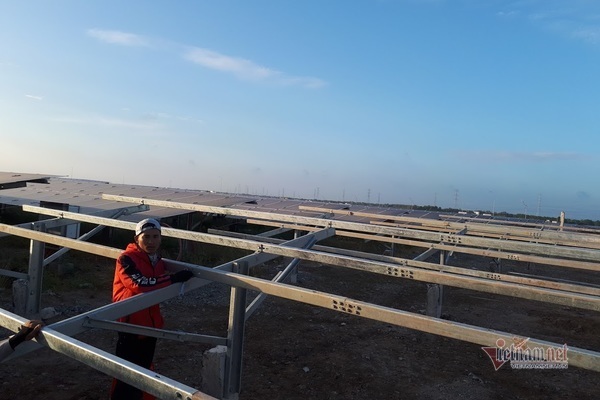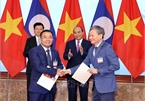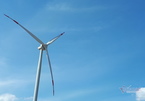
“Four months ago, we surveyed a solar power project. Just within two hours, the total capacity of the plant dropped by 90 percent,” said Ha Dang Son, deputy director of the Vietnam Low Emission Energy Program (V-LEEP).
He spoke at the Forum on Energy Security for Sustainable Development held some days ago.
What will happen if the electricity system capacity falls by 90 percent for two days once the proportion of renewables increases from 10 percent at present to 30-40 percent?
Son warned that if this happens, the entire electricity system in Vietnam would be in danger.
He called for further surveys and more detailed assessments about various kinds of energy.
“We say renewables are cleaner and better. But they have a lot of disadvantages in operation,” he said.
A survey in the last two years found that thermopower projects using new technologies and managed in accordance with strict standards can considerably mitigate the impact on the environment.
Meanwhile, ash and slag, which are considered big pollutants, turn out to be useful in a circular economy. Pha Lai’s fly ash, for example, can be used to build hydropower dams.
As for hydraulic power, the total capacity of pumped-storage hydropower has increased very rapidly recently.
“There are always both sides of a coin. The problems don't lie in technology, but in whether we can do it well,” he said, adding that there is no bad technology, and all technologies have both advantages and disadvantages, including wind and solar power.
How to generate enough electricity
A report found that electricity consumption in Vietnam has increased by 10 percent per annum in recent years. Vietnam needs to have 5,000-6,000 MW of capacity of new electricty sources each year.
But the seventh national electricity development plan has not proceeded well as many projects have gone slowly.
The Ministry of Industry and Trade (MOIT) reported that the growth rate in new electricity sources decreased considerably in 2016-2019 to 8 percent per annum (5 percent for hydropower and 10 percent for coal-fired thermopower).
Nearly all the hydropower potential has been used up, while it is more difficult to develop coal-fired projects.
MOIT, when compiling the eighth national electricty development plan, set the goal of generating enough electricity as the top priority task amid increased imports of electricty from Laos and China.
L. Bang

EVN signs MoU to buy electricity, develop power projects in Laos
Vietnam Electricity (EVN) on December 6 signed various Memoranda of Understanding (MoU) with investors of power projects in Laos to develop and purchase electricity from the neighbouring country in the time ahead.

Wind power developers worried about low electricity price
The Ministry of Industry and Trade (MOIT) has proposed continuing the FIT (feed in tariff) for wind power, but lowering the tariff by 20 percent, causing concern among wind power developers.